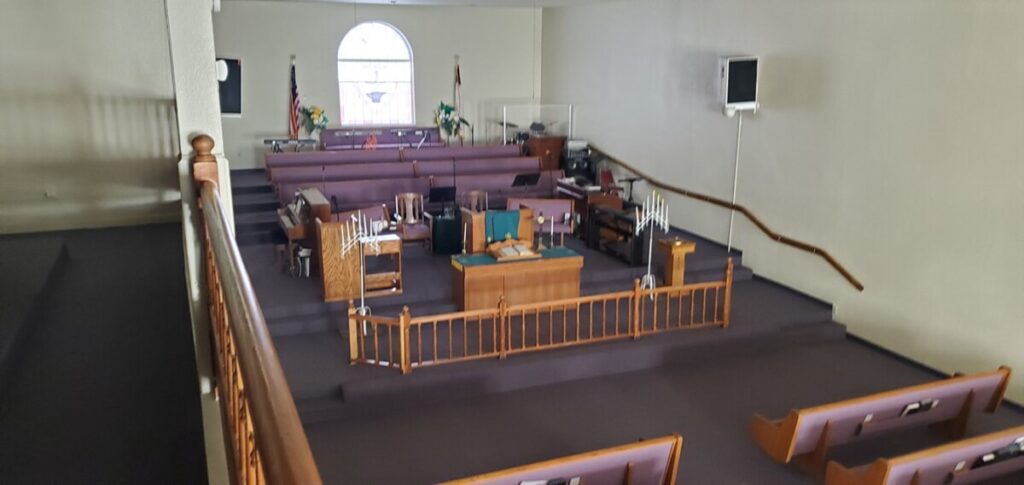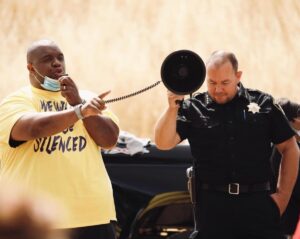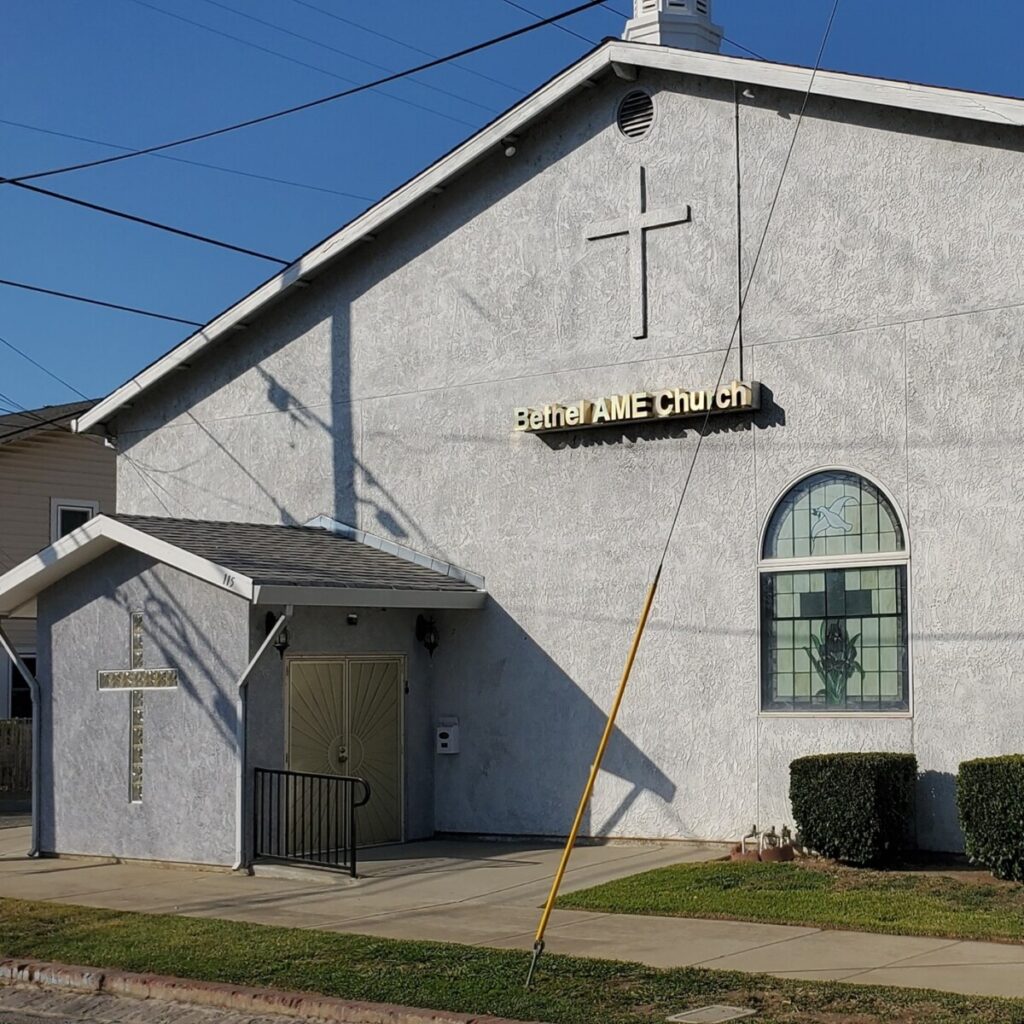How I Got Here
In 2019 I was sitting in the meeting for the commission on statistics and finance, for the General Board of the AME Church, in Atlanta Georgia. There were multiple topics being discussed, but the one that caught my attention is when the Chief Information Officer[1] (CIO) requested that all bishops turn in their updated statistical reports. The reason this caught my attention was that the CIO quoted the current reporting reflected a 25% drop in membership within a 24-month reporting period. This was an eyebrow lifting fact indeed, coupled with the reports from this same commission during General Board Meeting in 2017[2]; that denoted the successive generations[3] of the church were reflecting the smallest percentage of active members within the church, and that percentage was decreasing. From these meetings, and the challenges I was facing as a young pastor, I realized that the AME church was facing an issue called terminal decline[4].
Normally terminal decline deals with the cognitive decline within a living person who is nearing the transitions of death. But for the purpose of my project terminal decline was the institutional decline that is caused by a level of cognitive dissonance that creates a trend towards institutional insolvency.[5] This made me look at the challenges I was dealing with as a young pastor and ask myself two questions. First, how did the AME church get here and second, what tools can a pastor use to divert this trend?
Where the Research Began
There were two things that came to my mind approaching this issue. What was the current leadership culture of the AME Church, and what ethical foundations drive it? I looked at leadership culture, because leadership culture is usually the root of an organization’s success and failures. I looked at ethical foundations[6] as a means of understanding the moral underpinnings of the AME Church and how it effects this overall trend of terminal decline itself. My theory was there were certain aspects of the leadership culture that was creating a counterintuitive culture to the theological and spiritual foundations that founded the AME Church.[7] I believed that the ethical modalities[8] currently undergirding this culture perpetuated the challenges we were seeing as pastors and could possibly be responded to by using an ethical leadership model that counteracts the challenges on the local level.
What the Research Showed
The research into the leadership culture provided a few key insights into the leadership culture and moral undertones of the AME Church, but it also provided a key understanding of practices within the church and how it was defined and informed by the habitus[9] of the organization. Habitus is part of a formula that defines the practice of an organization[10]. While I won’t go in depth regarding the practice equation, my research found that habitus was a historical, cognitive schematic; that informed culture, practice and morality within an organization and by default the AME Church.
The research denoted that there was an over reliance on a transactional leadership[11] model which focused on a system of expectations and contingent rewards. The moral foundations this leadership structure leans on are associated with protocol and duty[12]; and looking at efficiency and end goals.[13] The combination of transactional leadership and these moral foundations, created a climate more interested in results and protocol than the original purpose[14] of AME Church.
I discovered that the original leadership structure was based on a transformational leadership model[15], and included a moral foundation of an evolving moral foundation, one that learned from the stories and experiences of the past and created of community that learned to relate to one another’s humanity in order to build better community.[16] I also discovered in this research that this transformational model and its moral foundation were not in conflict with transactional leadership but could work in concert to shift the trend of the AME Church through a new type of ethical leadership model[17] for pastoral leadership.
The Pastoral Model & Innovation
To evaluate the theory, I developed in my research I created a different type of ministry approach for the church that I currently pastor, Bethel AME Church, Marysville (Bethel Marysville), which is located 35 miles north of Sacramento in the Yuba/Sutter County area of northern California[18]. I broke down this approach into four parts:
- Leadership Development – I sought leadership within the church that sought to improve the climate of the church and the way ministry was done in the community
- Ministry Diversification – Developing methods to execute impactful ministry without exhausting church resources[19]
- Create a Nonprofit Partner – Establish a nonprofit partner that serves as a community nonprofit that can execute ministry goals through grant programs inaccessible to religious 501c3 organizations
- Creating Spaces – Intentional develop ministry spaces for all age demographics within the church, including but not limited to specialized ministries, activities and services that focus on creating homeostasis[20] within the ministry.
How the Innovation was Implemented
- Gifts & Intent Assessment – I implemented an assessment of gifts within the congregation and reached out to those with the gifts and intention of supporting church growth into my leadership team.
- Ministry Diversification – We developed multiple ministries including a feeding program that has fed over 8,000 people within the last two years. Creating a virtual ministry platform for those unable to participate physically in church activities. A women’s support group that reached out to women throughout the community. Developed a partnership with a safe house for domestic violence survivors. Furthermore, we created strategic partnerships with community organizations to source volunteers and support.
- Established the LOFT[21] Institute – Bethel Marysville established a community nonprofit[22] called the LOFT Institute that partners with Bethel on several projects including a racial reconciliation program which hosts seminars once a quarter in the Yuba/Sutter County community. LOFT is also working on building housing for domestic violence survivors and their families.
- We began the dialogue – In order to create the spaces needed for ministry we began a dialogue. We did so by conducting a intergenerational workshop where members in the community from all age groups participated and learned about one another. The results have shown a gradual increase of children, young adults and youth returning and joining the church.
Did this impact the Shift?
These innovations were implemented during the pandemic, which upon re-opening we experienced an 80% drop in attendance. The results we experienced are as follows[23]:
- Church attendance – Increased to 80% of pre COVID levels
- Total membership – Increased by 12 (19%)
- Improved spiritual climate
- Improved community support
- Increased participation by both new and old members
When I came to Bethel Marysville it was a church that had all the symptoms of a declining church. With the innovations that were implemented there has been a change in both the climate and the people. Bethel Marysville went from being a church on the precipice of closing, to a church that is looking to the future.
[1] Also referred to as the General Secretary
[2] This meeting was conducted in Los Angeles
[3] Specifically, ages between 13-45 years old
[4] The original definition of terminal decline is as follows: Terminal decline (or terminal cognitive decline) is the gradual decline in cognitive function that occurs as a function of time before death. The onset and severity of terminal decline vary greatly between individuals. https://onlinelibrary.wiley.com/doi/abs/10.1002/9781118521373.wbeaa326#:~:text=Terminal%20decline%20(or%20terminal%20cognitive,decline%20vary%20greatly%20between%20individuals.
[5] A fancy way of notating the trend towards institutional death
[6] I used the five ways of doing ethics defined by Walter Earl Fluker in Ethical Leadership: The Quest for Character, Civility, and Community
[7] Due to the fact that the AME Church thrived in the midst of extreme circumstances of social marginalization and racial discrimination, and was still able to build universities, churches and the oldest Black newspaper in the country
[8] The ways of ethics I mentioned in the earlier footnotes which are The Rationalist, The Realist, The Re-Tooler, the Raconteur and The Relationist Fluker, Walter Earl, Ethical Leadership.
[9] See John Scott and Gordon Marshall, editors, Dictionary of Sociology (Oxford University Press 1998) who define in this manner: “Habitus can be defined as the individual’s personality structure — the composite of an individual’s lifestyle, values, dispositions, and expectations associated with particular social groups that are acquired through the activities and experiences of everyday life. In other words, the habitus could be understood as a structure of the mind and emotions characterized by a set of acquired schemata, sensibilities, dispositions, and taste.”
[10] The formula is (habitus + capital) + field = practices
[11] Created for larger organizations that focus on the accomplishment of repetitive tasks. The AME Church is a multi-national organization in 39 countries and 5 continents
[12] The Rationalist
[13] The Realist
[14] The ultimate purposes are 1) to make available God’s biblical principles, 2) to spread Christ’s liberating gospel and 3) to provide continuing programs that will enhance the entire social development of all people. AME Sunday School Union, The Doctrine and Discipline of the African Methodist Episcopal Church, 2016.
[15] [15] Transformational leadership is value-based, innovative, creative, and honors long term sustainability, and builds capable leaders within the organization. Transactional leadership, as discussed in the previous sections, is built upon a system of expectations and contingent rewards; it is a form of active and passive management that encourages a culture of self-centered interest.
[16] The ways of The Retooler, The Relationist and The Raconteur
[17] ethical leadership is the critical appropriation and embodiment of moral traditions that have shaped the character and shared meanings of a people. Fluker, Walter Earl, Ethical Leadership, Location 576.
[18] Which resides within the 5th Episcopal District of the AME Church, Bishop Clement W. Fugh presiding
[19] This included both financial and human resources available to participate in ministry.
[20] Youth and young adults are critical missing pieces, but all ages and demographics need representation in order for a church congregation to thrive. This is a state of ecclesial homeostasis where the eco-system is the congregation itself
[21] Lifting Others Forward Together
[22] This was a free-standing nonprofit that did not serve as a subsidiary of the church
[23] Based on the last 12 months

